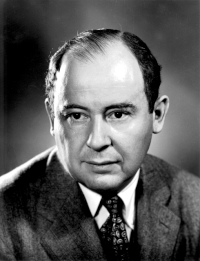
Photo from wikipedia
Abstract Ethanol is a renewable, clean fuel and is usually blended with gasoline to be used as an alternative fuel for internal combustion engines. In the present study, the instability… Click to show full abstract
Abstract Ethanol is a renewable, clean fuel and is usually blended with gasoline to be used as an alternative fuel for internal combustion engines. In the present study, the instability development and cellular structure evolution of a spherically expanding flame of E30 (gasoline blended with ethanol of 30% liquid volume) are investigated. By processing the flame images, the equivalent diameters of cells on the flame surface are calculated to describe and explain the development of the cellular structure. The results show that with the propagation of flame, the size of the cellular structure generally increases first and then decreases. Eventually, the mean equivalent diameter of cells tends to a constant value, and these small cells are uniformly distributed over the entire flame surface. The effect of equivalence ratio on the flame instability is studied as well. As the equivalence ratio increases, the cellular structure development is advanced and the cell size is smaller, which indicates that the flame instability is enhanced. The critical wave number is almost the same, while the critical Peclet number approximately followed a linear decrease. The experimental measurement of the sensitivity of Pe cr to equivalence ratio was verified by the theoretical results and the linear equation is proposed.
Journal Title: Experimental Thermal and Fluid Science
Year Published: 2021
Link to full text (if available)
Share on Social Media: Sign Up to like & get
recommendations!